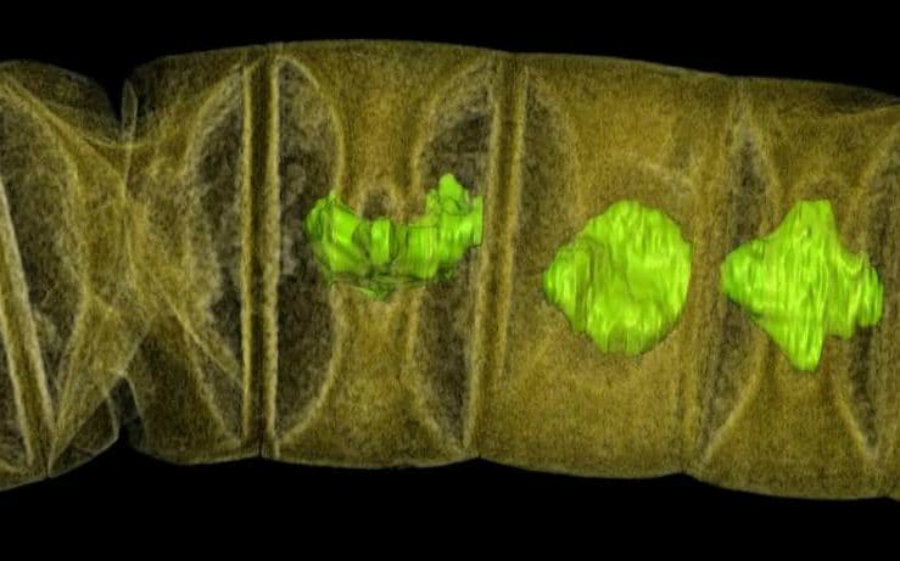A new study, conducted by a team of paleontologists, showed how red algae like Nori, which is the seaweed included in sushi rolls, are among the oldest plants ever discovered. These plant-like fossils were found in India, and they could have been there for as long as 1.6 billion years.
According to the study, published this Tuesday in the journal PLOS Biology, the team of investigators found a body of rocks with the mentioned fossils in the shallow sea. Even when fossils are commonly linked to ancient and preserved bones, these old plants can also be considered as such for being around Earth for more than one and a half billion years.

What can be proved with this study?
According to the lead author, Stefan Bengtson, Professor Emeritus of Palaeozoology at the Swedish Museum of Natural History, there is no way of being a hundred percent sure about the particular characteristics of an organism that lived so many years ago. Despite the fact that there is no remaining DNA, there is a body of similar features that can lead to thinking that these fossils are red algae as both morphology and structure match with actual specimens.
About this problem, Nicholas Butterfield, a paleobiologist at the University of Cambridge who was not involved in the research, said that this study does not prove anything yet.
“The fossils are interesting, but, in my books, far from convincing, either as red algae or as eukaryotes. Yes there are some red algae and eukaryotes that exhibit features comparable to those seen in the fossils, but none of these are fundamentally exclusive to red algae or eukaryotes,” Butterfield wrote in an email to the Christian Science Monitor. “That’s not to say that there aren’t unambiguous eukaryotes at this time, but we’re not looking at them here,” said Nicholas Butterfield.
In this issue, if the investigators are right concerning their allegations, this study could represent a significant discovery to the scientific community. The publication could support the idea of eukaryotes, which is a type of organism that some scientists say could have led to human life. Red algae discovered fossils might show the first discovery of eukaryotes on Earth.
“The general picture of the Proterozoic at this time is that we had an almost exclusively microbial biosphere,” Bengtson said in a phone interview with the Christian Science Monitor this Tuesday. “I think we have to rethink the way we calibrate the tree of life, and perhaps push back the origin of not only the red algae but also other eukaryotic groups farther back in time.”

The origin of life: A long-term debate
A debate regarding how long ago the first eukaryote organisms emerged on Earth is being held within the scientific community. Since this information is crucial to understanding the beginning of human life and it happened so long ago, it is a polemic issue.
Investigators like Roger Summons, a geobiologist at MIT, affirm that the first eukaryotes present on Earth lived about 2.33 billion years ago. However, Summons, who did not participate in the study, says that many scientists affirm that eukaryotes are as young as 800 million years old. Others say that these organisms did not appear on Earth until the Cambrian period, which took place between 500 and 600 million years ago.
According to Dominic Papineau from the University of London, the oldest fossils were found at some point between 3.77 billion to 4.22 billion years ago. He published his study earlier this month, and many paleontologists have shown their disconformity with his findings, including Butterfield himself.
Another investigator, Shuhai Xiao, has said that he has been studying several organisms that look a lot like the presented fossils. Xiao, a paleobiologist at the Virginia Polytechnic Institute and State University, says that specimens that lived about 600 million years ago are very similar to the 1.6 billion-year-old fossils, and he thinks that it could be the same algae branch at different periods.
Dr. Xiao acknowledges the importance this study has since this discovery could “push the origin of photosynthetic eukaryotes at least back to 1.6 billion years.” He admitted that there could be much older specimens on Earth without being found since the discovered fossils are clearly not the most primitive photosynthetic eukaryotes.
Either way, one of the most interesting facts about this discovery is that there are hints that suggest these specimens were able to conduct photosynthesis processes, that much time ago. These fossils seem to have had a body of structures called platelets. These structures, scientists say, could be part of the chloroplasts, which are the areas of the plant that are responsible for the photosynthesis process.
Source: Christian Science Monitor
